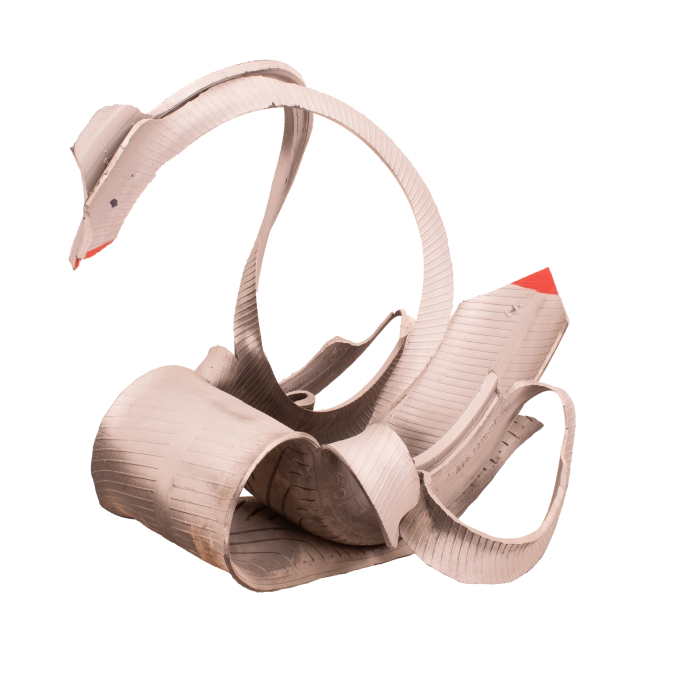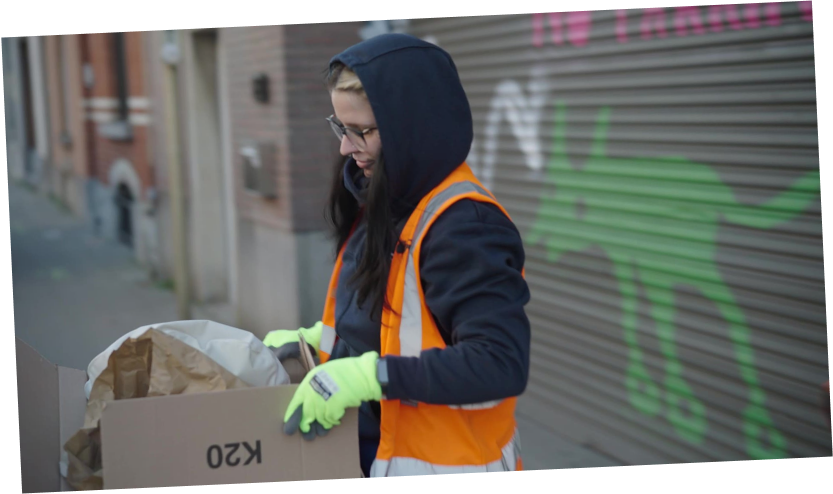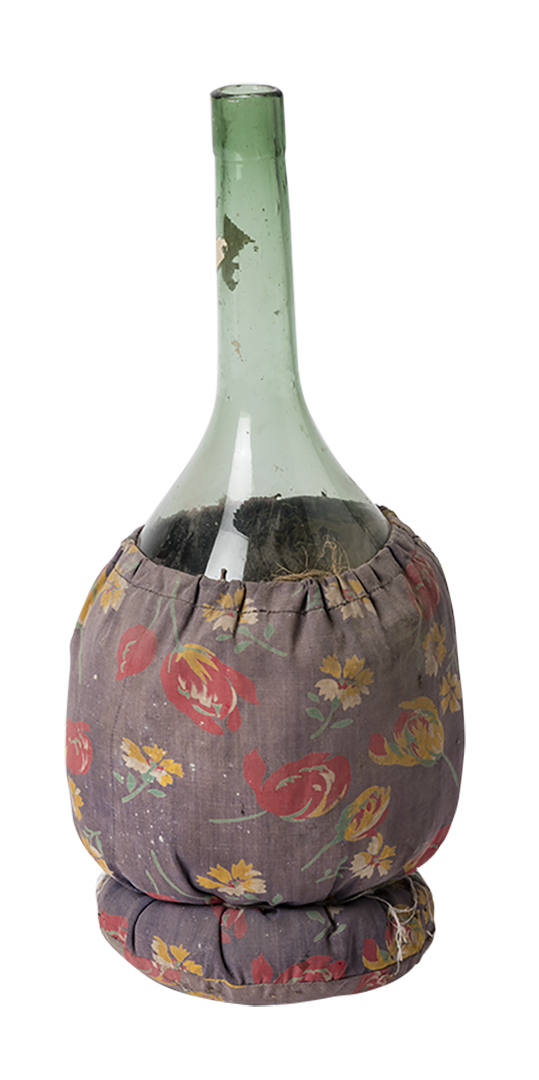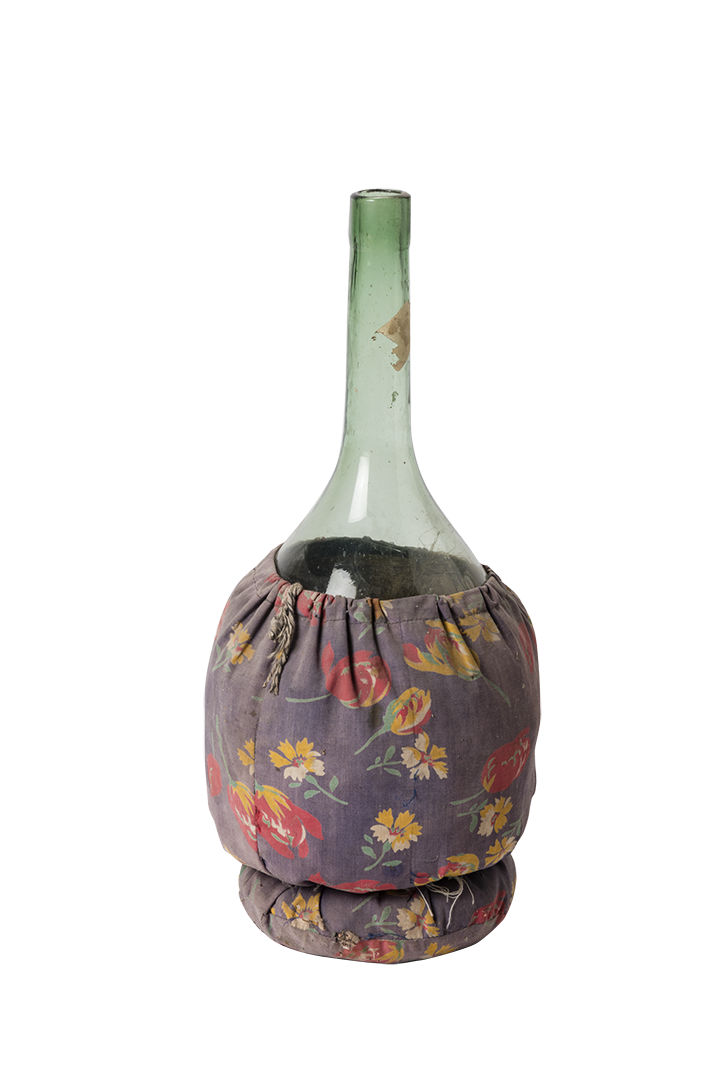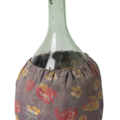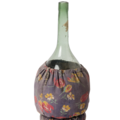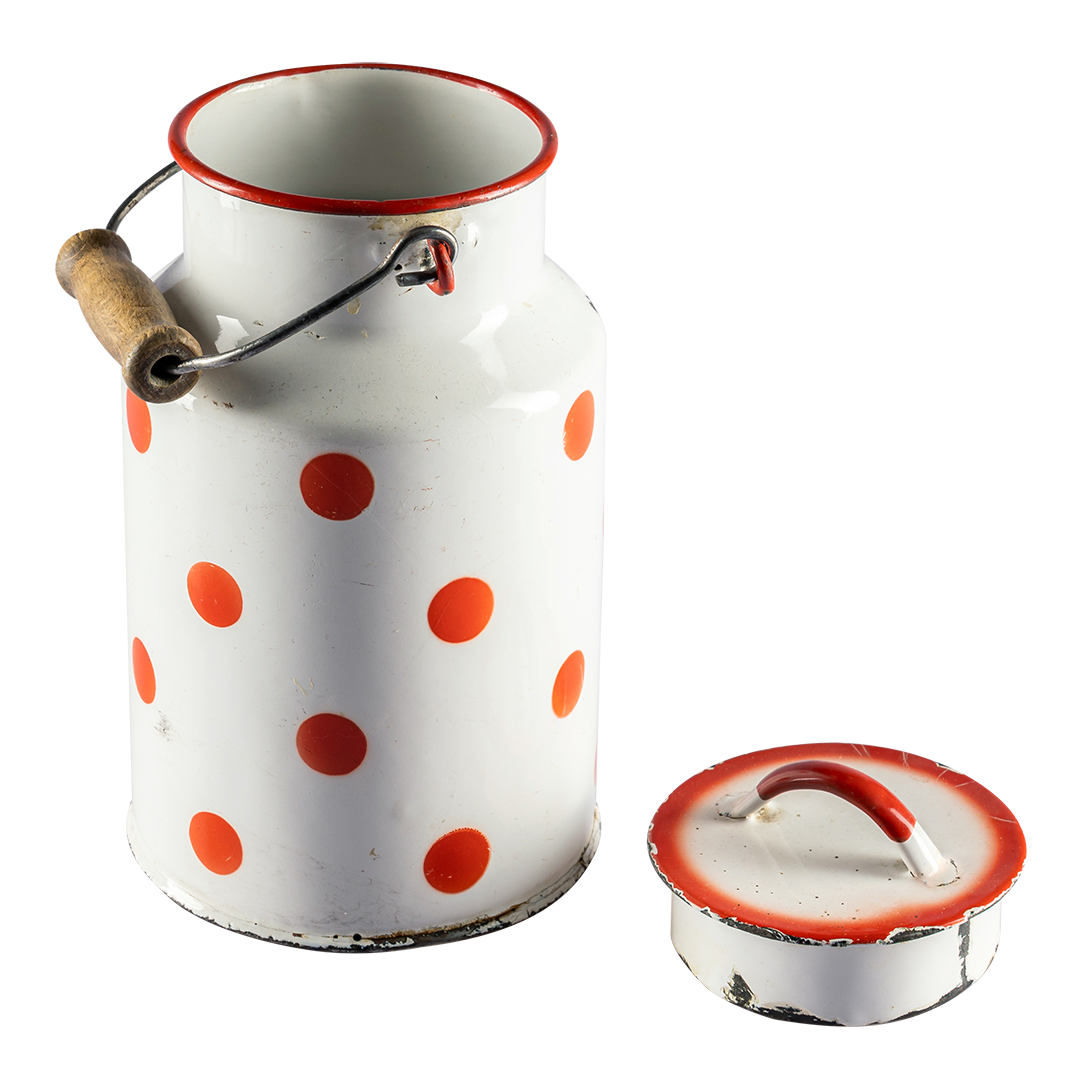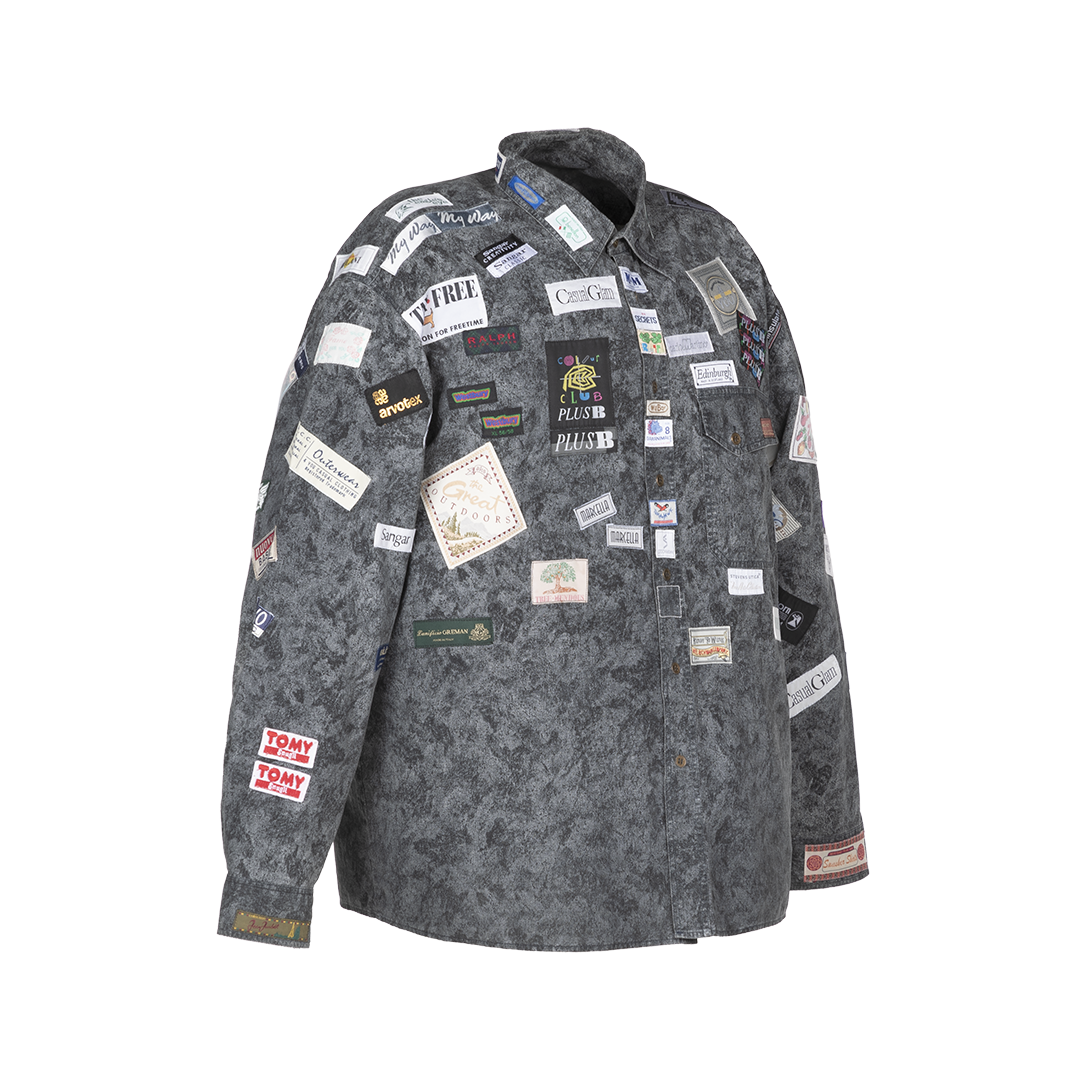Artist/Maker Unknown
Date Production/Creation
20th century
Entry in the museum collection
Terminus post quem 1950
Place of origin
Ozzano Taro, Collecchio, Parma, Emilia Romagna, Italy, Europe
Current location
Ettore Guatelli Museum foundation, Ozzanno Taro, Italy
Material
Glass fiasco bottle with repurposed fabric sewn around it.
Dimension
Cm: 33 (h) 45 (diameter)
Inventory Number 0101
Keyword Reuse Rural life Textile
Copyright @Ettore Guatelli Museum Foundation
Status On display
Image Credit Mauro Davoli
A patchwork of materials, each with its own past and its own special purpose.
What is this object about, who are the people behind it?
This fiasco bottle has been covered with leftover fabric from a cloth that had been used thousands of times in an unknown country kitchen. The round base, made of recycled tin, was designed to catch any drips, while the fabric cover was used to shield the wine from light and keep it cool. In one of his essays in La coda della gatta, Guatelli wrote the following about the fiaschi in the museum: ‘If it wasn’t possible to encase them in wicker, other materials were used: hessian, fabric, tin and even string that was crocheted in place – although that’s already getting fancy. Some fiaschi were encased in patched-up pieces of fabric. Nowadays this seems terribly quaint, but it did the job back then.’
What places is this object related to, how European/transnational is it?
Like all the others that can be seen in the kitchen of the museum, this fiasco and its cover would be brought out into the fields for a spot of refreshment during work breaks. The cover – whether made from fabric or tin – was therefore intended to shield the wine from the high temperatures and sun’s rays that would impair its quality, and to prevent the bottle from shattering in transport. This technique would certainly have been common in other parts of Europe too, although the object is often associated with typical scenes of the Italian countryside and its vineyards.
Why and how did this object arrive in the museum’s collection?
In the 1950s, Ettore Guatelli began increasingly regular visits to waste collectors’ storerooms in the Apennines, gradually laying the foundations for his future museum. From the mid-1970s, his collection of objects grew considerably, unintentionally becoming part of a trend that took off in the seventies and eighties in Italy for the revival and promotion of popular culture. As a result, his museum became a unique and inimitable establishment devoted to the demographic, ethnological and anthropological heritage of twentieth-century Italy.
What is the relation of this object to waste?
The marvel of the objects in the Guatelli Museum is precisely their everyday nature which reflects the ordinariness of a life we live each day, but to which we all too often forget to attach importance and which we blur with apparent obviousness.Ettore Guatelli himself said he was removed from the distinguished authors with whom he was often compared because, as his work dictated, he felt more humanly close to the work of craftsmen and workers, to the know-how that their hands and movements incarnated, to their "incredible virtuosity", to their being artists of the everyday world, on which he drew and for which he created.

